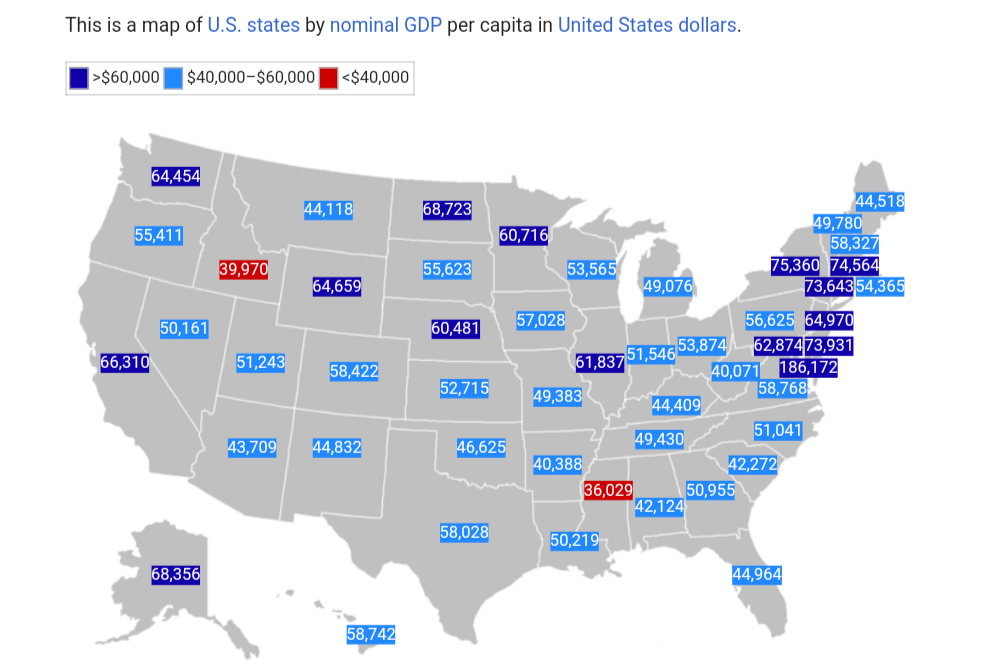- Joined
- Jul 26, 2018
- Messages
- 8,873
- Reaction score
- 5
At that rate ND may as well be part of Canada instead of the US
The population is still only 760 K, we came from Scandinavia (Norway).

As mentioned, the Bank of NoDak is publicly-owned and has pretty successfully served the function of promoting the development of agriculture, commerce and industry within the state, particularly when it comes to extending credit to small and medium sized enterprises.
Much of the shale oil and gas bearing land is leased to firms, royalties are extracted - separate from tax revenue to fund the budget - and siphoned to the State Investment Board and Department of Trust Lands which manage the primary 'Legacy' sovereign wealth fund and various other funds for K-12 and higher education.
The 'Legacy' SWFund is still a largely untapped minnow at $6 plus billion with no clear purpose; total deposits are up to $4.72 billion from oil and gas tax revenue with another $1.2 billion in (very conservative) investment earnings.
There's been legislative proposals to use it in part to help fund public works projects and people often wonder about redistribution in the form of dividends. The state also collects royalties that go into the separate Common Schools Trust Fund, which is now around $5 billion itself.

Some reading material.
NR: Why Public Banks Are Suddenly Popular
There's only one in America—in North Dakota.
The Bank of North Dakota, founded in 1919, was created out of economic uncertainty: Farmers, concerned that large grain traders and banks based outside the state threatened their economic sovereignty, saw a public bank as a means to protect themselves from exorbitantly high interest rates that put their farms at financial risk. The bank offered farmers more equitable access to capital, and despite initial fears that it represented a Bolshevik takeover of the state, the bank eventually gained bipartisan support.
Today, the bank is a healthy: Its 2017 annual report says its income has risen steadily since 2013, and the state’s return on its investment is 17 percent. Khalatbari, the Denver mayoral candidate, said North Dakota’s bank helped the state survive the recession “better than any state in the United States.” That’s probably a stretch. The oil boom has a lot do with North Dakota’s fiscal health, and even the bank’s president has cast doubt on the idea that the institution was largely responsible for the state’s relative fiscal health during the recession.
But as The American Prospect reported in 2013, North Dakota was the only state in the country not facing a revenue shortfall in 2009. In fact, the state possessed a surplus, thanks in part to the bank: The Associated Press reported that the bank had “funneled almost $300 million in profits to North Dakota’s treasury” since 2000. It seems fair to say that the public bank did help somewhat—not just through its contributions to the state’s general funds, but through its partnerships with private community banks and its willingness to invest in community development projects.
As David Dayen noted for In These Times in 2017, the Bank of North Dakota offers fairer loans than the state government might find elsewhere. “BND’s Infrastructure Loan Fund, for example, finances projects at just two percent interest; municipal bonds can have rates roughly four times as high,” he wrote. For this reason, activists with Public Bank L.A. argue that a city bank could loan the city money, below market rates, to build more public housing and support the development of a greener energy infrastructure.
Surely North Dakotans shouldn’t be the only ones who get to benefit from one.
https://www.governor.nd.gov/news/ne...-leading-edge-internet-connectivity-and-speed
BISMARCK, N.D. – North Dakota today announced a 100-gigabit upgrade to the state network that will put its schools and government on the nation’s leading edge of internet connectivity and speed.
The state Information Technology Department (ITD) recently signed a contract extension with Dakota Carrier Network (DCN) providing for significant upgrades to the state network known as STAGEnet, which serves state and local governments, K-12 education and higher education.
When finished, the upgrades will position North Dakota as the first state to achieve 1-gigabit connectivity to every school district in the state. Completion is anticipated in summer 2019.

North Dakota Prison Officials Think Outside The Box To Revamp Solitary Confinement
North Dakota's Norway Experiment: Can Humane Prisons Work In America?
Along the highways of North Dakota, drivers are greeted by billboards advising people to “Be Nice” or “Be Kind.” Fittingly, the state’s incarceration rate of 240 prisoners per 100,000 residents is among the lowest in America, where the national average is 670. (Norway’s rate is 75.) And North Dakota’s prison population of about 1,821 is less than half that of its neighbor to the south.
Progressive: The Refugees Of North Dakota
Here is someone with a cherished culture, homeland, and family—all violently torn apart by forces far outside of their control. These people deserve help, not only temporary refuge but the kind of support that will enable survivors to establish themselves as happy, productive members of a society. They need a new home. And in helping them find it, the people of North Dakota shine.
FLYOVER (YOUR HEAD) STATE





